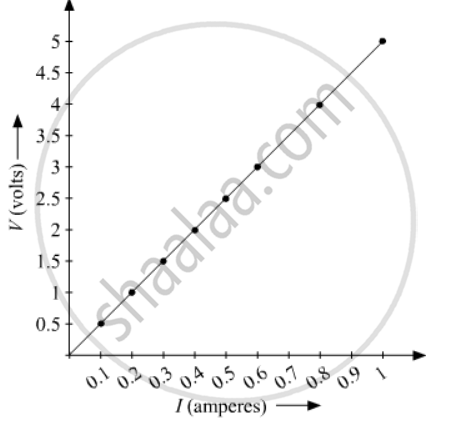Advertisements
Advertisements
प्रश्न
The values of current (I) flowing through a given resistor of resistance (R), for the corresponding values of potential difference (V) across the resistor are as given below:
| V (volts) | 0.5 | 1.0 | 1.5 | 2.0 | 2.5 | 3.0 | 4.0 | 5.0 |
| I (amperes) | 0.1 | 0.2 | 0.3 | 0.4 | 0.5 | 0.6 | 0.8 | 1.0 |
Plot a graph between current (I) and potential difference (V) and determine the resistance (R) of the resistor.
उत्तर
The plot between current (I) and potential difference (V) is given as,

Resistance of the resistor = Slope of the above graph
Chose two points A and B on the graph,

Slope of the graph is = Slope of line AB = `(4-1)/(0.8-0.2) = 3/0.6` = 5 Ω
APPEARS IN
संबंधित प्रश्न
What is meant by saying that the electric potential at a point is 1 volt?
How much work is done in moving a charge of 2 C across two points having a potential difference of 12 V?
State the relation between potential difference, work done and charge moved.
State whether a voltmeter has a high resistance of a low resistance. Give reason for your answer.
The device used for measuring potential difference is known as:
If the potential difference between the ends of a fixed resistor is halved, the electric power will become:
Calculate the potential difference between the two terminals of a battery if 100 joules of work is required to transfer 20 coulombs of charge from one terminal of the battery to the other.
Electric cells having 2V potential difference each have been connected in the form of a battery. What will be the total potential difference of the battery in both cases?
Potential near a charge is the measure of its ______ to bring a positive charge at that point.
Study the following circuit and find:

- Effective resistance of the circuit
- Current drawn from the battery
- Potential difference across the 5 omega resistor


